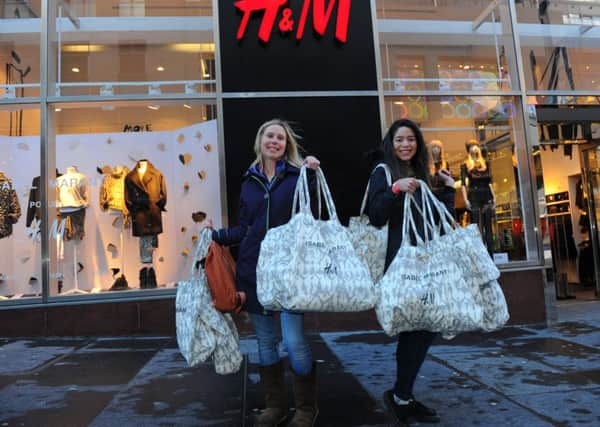Louise McGregor: Unused clothing a colossal waste


Scotland may be a nation stereotyped for its apparent thriftiness, but across the country we waste a staggering amount of money on clothes. The average household owns £4,000 of clothing but one third of this is never worn. This brings the cost of unused clothing to an eye-watering £30 billion across the UK. Even worse, we are sending an estimated £140 million of used clothing to landfill – the equivalent of around 350,000 tonnes.
That is a colossal waste, not just of money but also of resources. Combined with the potential damage to the environment, we are facing a very real problem and it is one that the textile industry is attempting to overcome. After all, the global success the sector has achieved through the export of luxury items such as kilts and cashmere has been reliant on its reputation for quality.
Advertisement
Hide AdAdvertisement
Hide AdNaturally the creation of these goods relies heavily on raw materials, and manufacturers are seeking ways to reduce waste and produce materials through new methods. But they face an uphill battle to address these issues alone, which is why Zero Waste Scotland is committed to working with the industry to fight back against the waste created as a result of society’s sometimes short-term view when it comes to clothing.
Together we are aiming to make the textile industry more sustainable, by developing innovative new business models which disrupt our current make-take-dispose model of consumption, and keep items in productive use for longer. This can be done in a number of ways, including through the creation of demand for clothing designed to last, or encouraging people to do simple repairs.
Zero Waste Scotland delivers the “Love Your Clothes” campaign in Scotland, which encourages people to value their clothes and waste less. Aimed at reducing the impact of unwanted clothing on the environment, the campaign is calling on consumers to buy quality items, recycling old or “out of date” ones and encouraging strong stewardship of your attire.
This focus on sustainability has been a hot topic over the past few days at the Edinburgh International Fashion Festival. Over the course of four days some of fashion’s greatest minds have come together to discuss how the industry can engage with businesses and consumers and get both parties on board with making fashion more eco-friendly.
Events have been held, presentations given, exhibits have been opened – there was even a symposium on the relationship between the fashion industry and sustainability at the National Museum of Scotland. Some of the foremost companies in the industry, including Ikea and Stella McCartney, have also weighed in as the subject of eco-friendly fashion dominated proceedings.
Fundamentally, the belief is that Scotland must move away from the make-use-dispose model and embrace a more circular economy which looks to ensure materials retain high value use for as long as possible. While this will not be a quick process, there are a number of steps clothes-lovers can take to help solve the problem we face.
The first tip is to get creative. Old favourites may have been damaged or put to the back of the wardrobe but with a quick nip and tuck these can be restored to their former glory. It’s important to make the most of your clothes – often we can all be guilty of buying more than we need, but this doesn’t have to be the case. If you take the time to look through your wardrobe you may be surprised at the hidden gems you might find at the back. And remember, if your clothes are in good condition then they are likely to be of value to someone else, even if you don’t want the item anymore. There may even be money to be made, but if not then don’t forget that the item can be put to good use through recycling.
We are a fashion- conscious country and that shouldn’t change – but by following these simple tips we can begin to reduce the levels of waste we currently experience and, crucially, put money back in our pockets rather than keeping it at the back of our wardrobe.
• Louise McGregor is Head of Circular Economy at Zero Waste Scotland